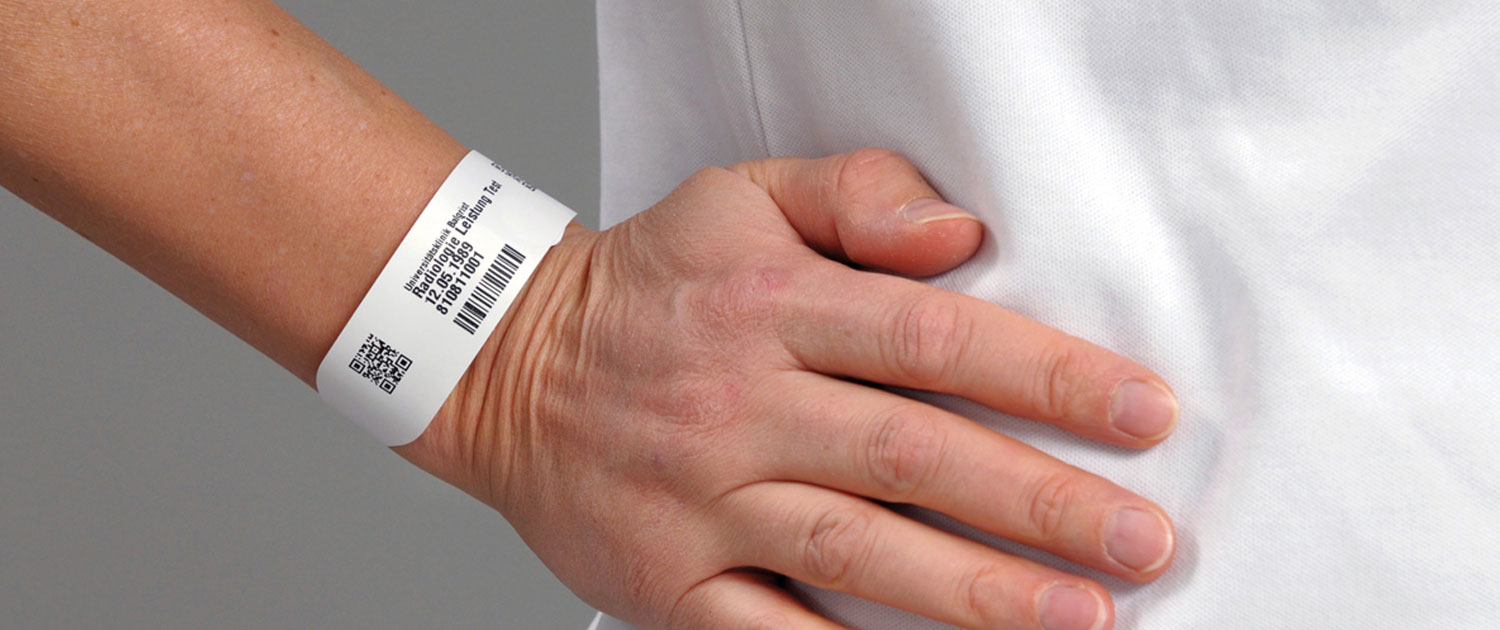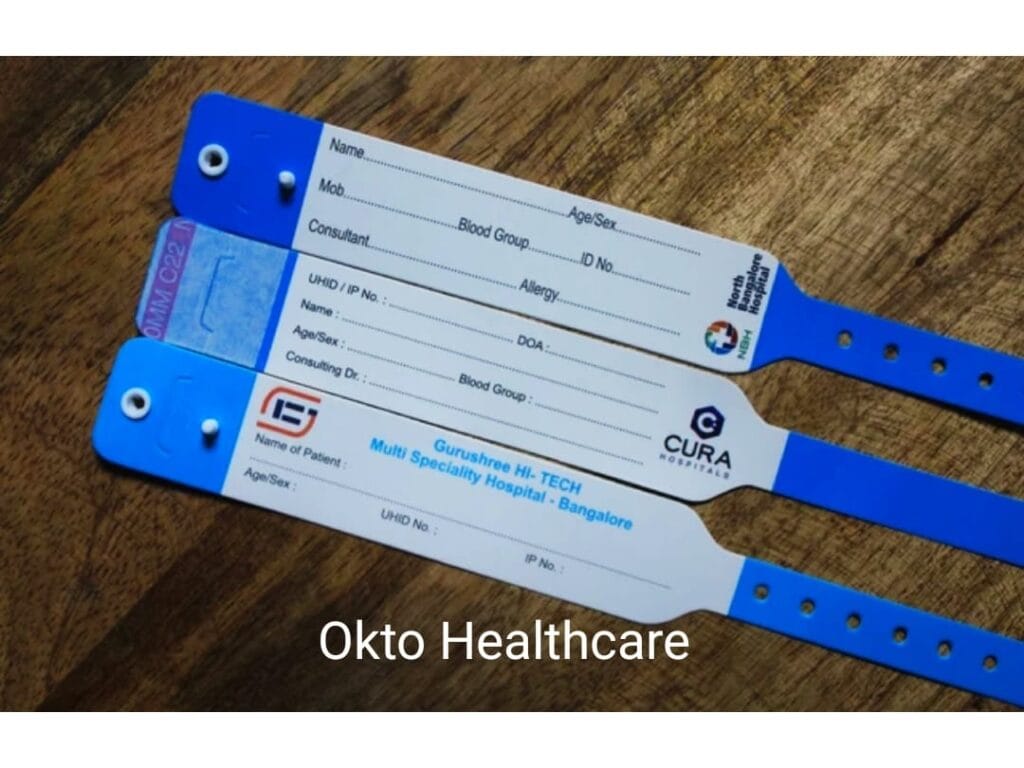Enhancing Safety: The Relevance of Person Identification Bands in Healthcare
In the realm of medical care, the effectiveness of client recognition bands can not be overstated, as they function as an essential safeguard against misidentification and subsequent mistakes. These bands, usually forgot, contain vital information that is crucial for making sure individual safety and security and ideal therapy outcomes. The implementation of efficient recognition protocols presents several difficulties that health care carriers should navigate. As we check out the complex role of these bands, it becomes apparent that their significance expands past mere recognition, increasing questions regarding best practices and future developments in individual security.
Review of Individual Identification Bands
Individual identification bands play a crucial function in making certain the safety and security and accuracy of person care in healthcare setups. These bands, commonly used on the wrist or ankle joint, serve as an essential device for validating patient identification, consequently reducing the threat of errors in therapy, drug administration, and various other healthcare procedures. Made from durable products, client recognition bands commonly consist of vital details such as the patient's name, date of birth, medical document number, and barcodes or QR codes for scanning.
The execution of person identification bands is crucial in different health care atmospheres, including hospitals, outpatient centers, and long-term care establishments. They add to an organized method in patient management, making it possible for health care specialists to rapidly and accurately identify patients, particularly in high-pressure situations where quick decision-making is important.
Furthermore, making use of these bands is straightened with regulatory criteria targeted at improving person safety and security - Patient Identification Band. By making sure that each client's information is conveniently proven and readily easily accessible, healthcare providers can keep a high standard of treatment, reduce the incidence of unfavorable events, and foster a culture of safety within health care organizations
Advantages of Accurate Identification
Exact recognition is fundamental to improving client security and care quality in medical care settings. It functions as the very first line of defense against mistakes that could cause negative client results. By making certain that each patient is properly identified via dependable ways, such as individual identification bands, health care service providers can substantially minimize the threat of misidentification, which can lead to unsuitable treatments, medicine mistakes, and also medical mix-ups.
Additionally, precise patient identification promotes efficient interaction among medical care teams. When all personnel can regularly determine clients, they can share vital information a lot more effectively, causing much better coordination of treatment. This is particularly important in emergency situation scenarios where prompt interventions are essential.
In addition, accurate recognition sustains compliance with governing standards, consequently reducing the risk of lawful repercussions for medical care centers. It cultivates trust fund between individuals and doctor, as people really feel more safe and secure understanding that their identities are being guarded.

Common Challenges Encountered
Guaranteeing reliable patient identification in medical care settings provides a variety of obstacles that can jeopardize security and care top quality. One significant difficulty is the variability in person populaces. People might get here in a state of confusion or distress, making precise recognition difficult. Furthermore, language barriers can prevent efficient communication, complicating the confirmation process.
One more difficulty is the dependence on human factors in recognition procedures. Health care experts may accidentally forget or misunderstand identification procedures, especially in high-stress environments such as emergency situation departments. This can result in mistakes, including the administration of wrong treatments or medications.
Technological concerns likewise pose difficulties. Although electronic health record (EHR) systems are designed to simplify person identification, system blackouts or user mistakes can disrupt the procedure. The physical layout of patient ID bands can lead to readability issues, specifically in instances where bands are damaged or covered.
Finally, irregular training among team concerning recognition procedures can result in spaces in knowledge and practice. Resolving these obstacles is vital for enhancing patient safety and security and ensuring that recognition bands offer their designated function successfully.
Best Practices for Execution
To efficiently apply person identification bands in medical care setups, organizations should take on a diverse method that focuses on standardization, training, and innovation assimilation. Standardization involves developing clear procedures for the style, application, and use identification bands throughout all departments. This makes certain consistency and reduces the risk of mistakes linked to differences in band kinds or identifying methods.


Training is essential for all health care personnel to guarantee they recognize the value of accurate person identification, just how to appropriately use and check out identification bands, and the treatments to adhere to in case of inconsistencies. Routine workshops and correspondence course can strengthen this knowledge and promote a culture of safety and security.
Innovation combination plays a pivotal duty in improving the efficiency of individual recognition bands. Using barcode scanning or RFID modern technology can streamline the recognition process, enabling real-time confirmation of patient identifications. Furthermore, digital health document systems ought to be set up to consist of signals for mismatches between the recognition band and person information.
Future Trends in Person Security
As healthcare continues to progress, the focus on person safety is likely to escalate, driven by advancements in modern technology and a better understanding of systemic risks. Emerging patterns suggest a shift towards even more incorporated systems that leverage data analytics, expert system, and artificial intelligence to enhance patient recognition procedures. These innovations can assist identify possible safety and security concerns prior this page to they intensify, thereby minimizing mistakes associated with misidentification.
Furthermore, the implementation of blockchain modern technology might useful source reinvent exactly how patient information is safely shared among medical care providers, ensuring that identification bands are current and regularly accurate. This will not just boost client safety and security however likewise assist in seamless interaction across multidisciplinary teams.

On top of that, the expanding concentrate on personalized medicine is expected to influence individual safety methods. By incorporating market and hereditary info right into identification systems, health care specialists can customize treatments better, minimizing the risks of negative responses because of misidentification.
Conclusion
In verdict, client identification bands offer as an essential part in enhancing safety within medical care settings. By assisting in precise client recognition, these bands significantly minimize the threat of errors associated with misidentification, inappropriate therapies, and medication administration. Regardless of obstacles in execution, adherence to ideal techniques and the combination of emerging modern technologies can better enhance their effectiveness. Inevitably, the ongoing focus on durable recognition protocols will add to better person end results and overall safety and security in medical care settings.
In the realm of medical care, the effectiveness of client recognition bands can not be overstated, as they offer as an essential safeguard versus misidentification and subsequent mistakes.Patient recognition bands play an essential role in ensuring the security and precision of client treatment in medical care setups. Made from long lasting products, client recognition bands typically consist of important info such as the client's name, date of birth, clinical document number, and barcodes or QR codes for scanning.
By guaranteeing that each patient is appropriately determined through reliable ways, such as client identification bands, health care suppliers can dramatically lessen the risk of misidentification, which can lead to unsuitable therapies, medicine mistakes, and also surgical mix-ups.
In conclusion, patient recognition bands offer as a vital component in improving Recommended Site safety and security within healthcare environments. Patient Identification Band.